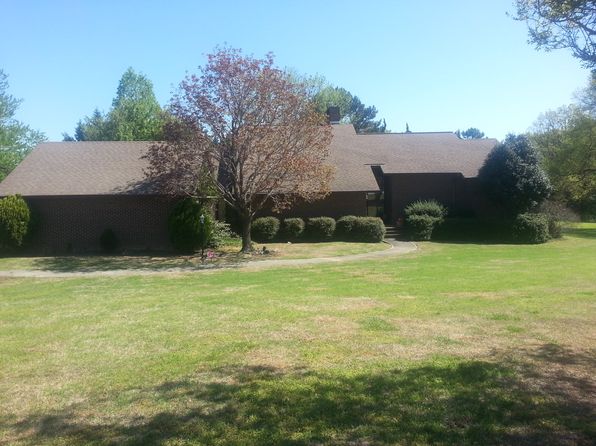Table Of Content

Follow your community backwards from the latest map available to the earliest one created. If your town is particularly small, look at neighboring communities too. Sometimes the set of maps made for a county seat or more populated area will include smaller villages close by. Not only is your public library the backbone of the community, but librarians in general are an awesome resource.

Don’t believe everything.
They are records of the transfer of ownership of land from the government into private hands. If neither one has anything on your specific house, check the Professionals, Volunteers, and Other Research Services section where Cyndi’s List will direct you to services that can help you dig up lots of information on your house. Hiring someone else to do the digging can be a great option if you have more money than time to spend on your property history research.
Research Sanborn Fire Insurance Maps
Local libraries and historical societies often have extensive collections that include informative documentation. What’s more, the librarians or curators are usually happy to help you search their materials as well as offer suggestions for searching further. While you’re scouring these local resources, make sure to look at their archives not just of property records, but also of newspapers, maps, and town or city directories. When it comes to researching the history of your house, there is local as a subject, and then there is local as a location.
The tiny details are what matter
Center for Colorado Women's History - History Colorado
Center for Colorado Women's History.
Posted: Thu, 08 Mar 2018 23:25:15 GMT [source]
But in my humble opinion, the best way is to organize everything in chronological order. The people trail will give you potentially fascinating and poignant stories that you will never find in public records. It provides the personalities of the past owners and occupants (i.e. the grouchy old man or the family with the mischievous children). This trail gives color to physical aspects of the house as well (i.e. the large lilac tree in the backyard was planted in memory of a mother).
Subscription Internet Services
Add a 4th column for thoughts or assumptions connecting the timeline as you work in chronological order. Some municipalities have a strong history initiative, while others are, well, lacking. Hopefully you live in an area with a strong, robust sense of history and preservation. Every time a property changes hands, there should be corresponding deed for each transaction (think of it like a receipt).
Note all names.
Large public or university libraries often have Sanborn maps for the local area and may offer them through Proquest’s online Digital Sanborn Maps (1867–1970) database. See holdings at the Library of Congress, with links to some digitized images. In addition to the paper trail (i.e. deeds and local resources) and the people trail, the house itself can provide visual clues of its history. While some visual clues are subtle and left to the experts, an amateur with a sharp eye and time can detect signs to provide a general idea of a house’s history.
BUT you might also want to include a photo of your house as well as your phone number. Sometimes you’ll get a lot more information from a person-to-person phone conversation than a more impersonal email. The best way to research the history of your home is to first creating a chain-of-ownership through deed research.
You’re able to both learn new information, as well as confirm details you’ve already collected. They have a research page where you can search for properties, and there’s also a downloadable spreadsheet, which is currently the most complete set of information they have on all properties. You can recover a property’s historic name or reference number from the spreadsheet. Some online parcel details will also include a sketch vector of the house.
We'll bring you the best search tips, exclusive offers and
Pieces of Kent County history find home in Geddes-Piper House - The Chesapeake Bay Journal
Pieces of Kent County history find home in Geddes-Piper House.
Posted: Wed, 12 Mar 2014 07:00:00 GMT [source]
Websites dedicated to family trees and genealogy could be helpful. So, too, could the county clerk’s office or county recorder’s office; these will have records of births, marriages, divorces, and deaths. These records of a deceased person’s estate distribution often are overlooked. Recent tax records are found at the county or town courthouse, usually in the assessor, auditor or clerk’s office. While at the auditor or assessor’s office, ask if separate transfer histories are maintained for each parcel. These histories, which list details such as changes of ownership, are a huge time-saver when researching chain of title.
Hand-hewn floorboards could indicate a particular part of the house is original or, at least, very old. The installation of a particular window style or type of glass could date a renovation. Even an old door knocker could give you a clue about a previous owner’s occupation. The more you read about architecture in the period your house was built the better able you may be to spot these revealing details. This 60-page guide takes you step-by-step through 25+ online and in-person resources to create a picture of your home’s history.
Students practice listening and contextualizing facts and opinions. Many local authorities and societies run schemes to commemorate important local historical events and people with a plaque fixed to a relevant building. The London-based Blue Plaques scheme, currently run by English Heritage, is thought to be the oldest of its kind in the world and has been going for more than 140 years. Street numbering (and often street names) may have changed over time, especially in the late 19th and early 20th centuries. Compare the location of your property with other buildings in the street to ensure that you are looking at the right house.
Glant recommends publicizing your curiosity, because neighbors and older community members will come out of the woodwork to tell you bits and pieces about your home’s history. Once you know an owner’s name, she suggests searching genealogical Internet sites for more information. Along the way, you’ll likely learn about the history of your neighborhood, the city itself, and maybe even the previous generations that lived under the very same roof. As a result, local institutions will often have deeper and more extensive collections specific to their own locations.















